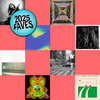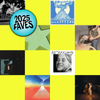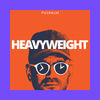Sudan Archives Is Pushing the Tempo
An afternoon at the museum with the genre-smashing violinist.

Brittney Parks is a bundle of energy in jeans, brown boots, and an extra-watt smile. It’s a drizzly September day in Manhattan, and the gray humidity streams through the floor-to-ceiling windows of the Whitney Museum, making its white halls feel even more hermetically sealed. We ride a massive elevator to the top floor for the main exhibit: Christine Sun Kim’s All Day All Night, in which the California artist interprets sound and music into American Sign Language and other “non-auditory, political dimensions of sound,” per the Whitney’s description. The exhibit is filled with drawings and sculptures that re-envision musical notation from the artist’s deaf perspective—staffs that stop midway and branch off, notes that dip and bend. Parks, who makes music as Sudan Archives, is a self-taught violinist, vocalist, producer, and songwriter. She swerves around genre conventions with irreverence; her talent, confidence, and directness are what make it work. I wondered if there would be a kind of parity between the way Kim views sound and Sudan views music: as a construct with so-called rules to upend.
“I like how she’s bringing us into her world, and I want people to feel like this [at my shows],” Parks observes, and points to a series of Kim’s graph drawings. “I want people out there dancing. I want to dance. I want to move. I just turned 31—I’m trying to get out all the jitters, so I knew that I wanted the BPM to be faster.”
She’s in town to promote her third album, The BPM, on which she explores and expands on the origins of dance music in Black Detroit and Chicago with a punk approach to form. Her finely tuned ear for mashing hip-hop, R&B, and violin solos into an avant-pop melange has rightly made her an underground hero. The BPM is a gleaming accomplishment, a document of self-actualization and musical fortitude that shatters the conventions of house, club, hyperpop, and melodic trap, and pieces them together again. For a violinist who already shreds, she’s going even harder on the melodies to match the drive of the beats. “I’m shredding because I’m trying to be like Jimi Hendrix,” she says.





